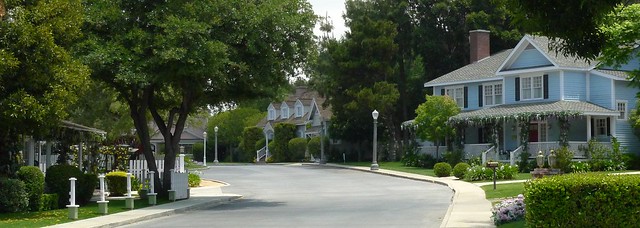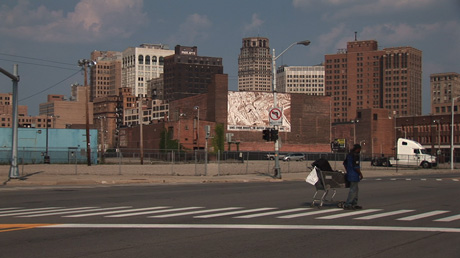
A while back I posted about Courthouse Square, the classic town square used in countless film and television productions. As I argued then, I think these backlot places are interesting because they at once reflect and shape our ideas about community. When Hollywood production designers build a backlot set, they will aim for something that is at once familiar yet generic (since it will be used in many productions), while simultaneously desirable (since Hollywood films tend to show a world that is a little bit more exciting and interesting than our own). That’s the part where they reflect our desires.
Yet once built, those sets reappear in many productions. Over time, with repetition, those generic backlot communities can come to actually shape our image of community. I don’t want to over-sell this idea: obviously we don’t simply passively absorb a picture of the world from movies and then start to believe this is the way the world is, or should be. But I do believe that pop-culture iconography is party of the language we draw on to make sense of the world, and that Hollywood’s images of the quaint small towns, leafy suburbs, or the polluted big city become powerful visual signifiers that influence the way we picture different types of community.
Continue reading →


